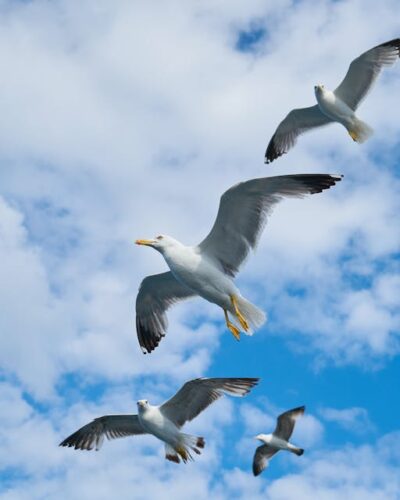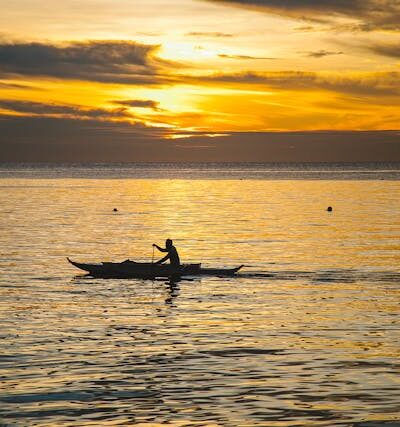Books, Books, Books
July 26, 2025• Featured, Reflections
One morning several years ago I awoke in a tangle of sheets and blankets, my eyes, when they finally managed to stay open, falling on a tall bookcase standing against the bedroom’s opposite wall. I felt a spasm of irritation, even a bit of anger, as I stared at its shelves, packed and stuffed tightly with books, many of them still unread. After all, it’s no fun being slapped in the face first thing in the morning by the sight of all the books I once intended to read but have never actually read. And what about the books shelved in my living room, stacked on the carpet next to my recliner, scattered and piled on the end-table. Is there no end?
How, I wondered, did I ever end up with all these books?
My habit of book-buying is an inheritance from my father who kept his collection in a single, half-empty bookcase in the upstairs front room of the house where I grew up. He at least kept his habit within the bounds of sense. I, on the other hand lived the life of a book-buying addict for several decades. Although the worst is well in the past, the result today is a life shared with hundreds of books – books on history, ranging from ancient times ’til only yesterday, subjects arcane and esoteric like philosophy and theology, a touch of psychology, a healthy gathering of fiction and a smattering of odds and ends.
Most of the time I have enjoyed living with all these books. They have been companions on a journey of long duration, partners in a relationship that like any other sits on a bedrock of underlying love and affection. But these years of comfort and familiarity have often been marred; for example when I survey my books and realize that many have never been read – at least not cover to cover. Some have barely been opened. Still others are dipped into only when my interest turns their way. Will I ever make a dent, ever come close to reading, let alone mastering, more than a fraction of the knowledge and understanding these books offer me?
So I ask myself once again, “Why all these books?”
Eventually, I moved the offending bookcase from bedroom to living room where it now stands next to my recliner, its identical twin on the other side. I still feel overwhelmed at times by the sheer number of volumes , but at least now they don’t stare me in the face first thing every morning, judging me for my failure to devote myself to them as seriously as I might – or perhaps as seriously as I should.
Viewed physically of course, these books are mere objects, crammed together tightly on a shelf so that glancing at one of my shelves, say a row of novels, is like looking at a row of tombstones, dead and inert, the spine of each volume inscribed with author, title, publisher – the essential data describing that which lies within. Until that is, I pick one of those novels off the shelf, open it to the first page and begin reading. If the author has done their job well and I am in a receptive and attentive state of mind, I am plunged into a world that comes to life all around me, a world in which the writer is concealed behind plot and characters, working behind the scenes in which the story unfolds. In books of other types, say histories or self-help books, the author stands front and center and speaks directly to me. Yet in both cases, the writer speaks, their voice coming to me through their words.
So who is this person who speaks to me from the pages? How hard and how long have they struggled to shape and form their thoughts into the words and sentences which will interest and perhaps even move me? I doubt that I ever thought about these questions before I took to writing myself, but after spending the last several years writing short essays I have reached a conclusion. Every writer has in their heart one desire that overwhelms all else – the desire, the need, to grab hold of the reader, to win and keep their attention for the duration, whether the writing on offer is a two-page essay or a five hundred page novel. Every writer is saying to the reader, “Listen to what I’m saying to you.” And indeed, sometimes as I sit in my recliner or stand in the kitchen chopping veggies or simmering a stew I can almost hear the writers speak from their pages, whispering to me, “Pick me,” they say, “let me tell you what I’ve been thinking.”
Quite often this chorus of voices pulls me in different directions, and I fly from one book, even one subject, to another like a honeybee flitting from flower to flower, never alighting long enough to drink deeply. At such times, exasperated by my own lack of focus and discipline, I give up entirely and flop down on my sofa to binge on TV or watch YouTube videos, the authors of all my books glaring down at me from the bookshelves above. “Listen to me instead,” each calls out, their voices together clamoring for my attention. Yet I know that even if I read full-time for the rest of my life, I will never be able to give each of them the time and attention they deserve.
And so I wonder, I hope for the last time, why all these books?
Friends and acquaintances have offered advice. One friend, as enamored of books as I am, offered a suggestion – examine each book, one at a time, and ask the question, “Will I ever actually read this book?” I have tried this with some success, but still my bookshelves are packed. After all, the book I send away today, whether to the used bookstore or to the church rummage sale, may be the very one I want to read next month or perhaps next year. Another acquaintance asked bluntly, “Why do you even own a book you haven’t read?” The very idea of such a utilitarian approach to book collecting, based on the delusion that books exist primarily to serve a practical purpose, stunned me into silence.
Ironically, it was on social media, today’s archenemy of focus and discipline, that I found an answer, my rejoinder to all those who suggest a more practical approach to the ownership of books. A kindred spirit posted on Facebook these words from author, publisher, and book-collector A Edward Norton, “The buying of more books than one can read is nothing less than the soul reaching toward infinity.”
At last, finally, I have my answer.
The Birds of Barnes and Noble
June 10, 2025• Featured, Reflections
I don’t often buy books anymore, but when I do emerge from the bookstore carrying three or four freshly purchased tomes, I like to sit in my car for an hour or so getting to know my new acquaintances. Trouble is, our conversation is always disrupted by the birds that flit and soar around the parking lot outside Barnes and Noble, landing once in a while to seek out the bits of edible detritus left on the asphalt, to squawk and strut and argue among themselves.
The birds occasionally take a break, alighting atop the light poles spaced across the parking lot, giving me a chance to return to my newly purchased books. But before too long they’re at it again, swooping down, banking their wings, their bodies angling as they negotiate the winds that sweep across the open stretch of asphalt, the winds that travel across the valley floor where I live, winds that have come from far away, from distant lands.
I’m pretty content living where I have for so many decades. I don’t yearn to travel far, to see all those places where the winds have been before they get to me. Yet when I find myself among the birds of Barnes and Noble, I am drawn away to another world, the world of sea and saltwater, for these birds are white and when I first noticed them years ago, they looked to my unschooled eye like seagulls. Even today, years later, it’s easy to pretend that their last waystation before the bookstore parking lot was a distant saltwater shore, say the Baja Peninsula to the south or the casino-strung shores of Atlantic City back east, or perhaps someplace closer like the Seattle waterfront, only a day’s drive to the west. It seems that for us land-bound beings all compass directions lead eventually to saltwater shores.
But I really don’t care how far these birds range over the earth or even what species they belong to. These are matters for the scientifically inclined, for those who categorize and classify nature’s bounty. I would rather receive these birds as nature’s offering, as a gift that awakens reflections and memories of my own wanderings along the sea’s edge – first as a child, wading in the New Jersey surf, my small hand clinging tightly to my father’s; later on, playing in the sand, my mother beside me, both of us startled to see my father rising from the water after tumbling under a wave far more powerful than he’d expected; years later riding a train on the last leg from Philly to New York City, staring out the window at sights my teenaged eyes had never seen, the salt marsh fringe of ocean, distant ships riding in the channel beyond; and finally, my last memory of the Atlantic, a college-age trip to the shore, towels spread out on hot sand, bodies slathered with suntan lotion, stretched out to bake beneath the sun blistering down from the empty sky.
It was decades before I reached the opposite coast, planting memories once again – driving high above the waters of Big Sur, mountains plunging steeply into the ocean, the surf far below a white ruffle against the rocks; riding the Victoria to Seattle ferry, gripping the rail and peering down to the water, hoping in vain to see a pod of whales or dolphins, even just one lone creature breaking the surface, only to have my wish finally fulfilled years later when I sat pier-end on the Seattle waterfront, a seal magically rising from the water at my feet, then slipping as quickly back beneath the dark saltwater surface of Puget Sound.
All that and more only a day’s drive from home. If I hop on the interstate early tomorrow morning and head west, I can be sitting on that self-same pier by late afternoon, gazing across the Sound to the Olympic Mountains, peaks laden with snow, waiting for another seal to surface at my feet.
And yet, for all the gifts it offers, Puget Sound is not the sea. Not quite. For that, you must take the ferry across the Sound, then drive to the other side of the Olympic Peninsula, where the sea awaits.
My mind, reaching back years, resurrects two special memories from my only journey across the peninsula – first on the day I arrived at water’s edge, when I hurried down the steep trail to stand among tide-strewn driftwood, gazing at the Pacific stretching out before me, exercising its power to dazzle the eye.
But it is the second memory, played out at the end of a long day’s drive, that awakened me to another power the sea exerts, the power of the tide. Not the moon-driven tide that draws the waters in then out, landward then seaward in its eternal rhythm. Instead, there is a second tide, just as powerful, driven by the heart’s longing, that draws us land-bound beings closer and closer to the sea’s edge, seeking that which we have never known, to finally see that which our eyes have never beheld.
I’d been driving most of the day, the tug of second tide growing stronger by the hour, until now, only twenty miles from water’s edge, its fierce pull was irresistible. The sun was a red ball sitting just above the horizon, the light dimming quickly, the sky growing dusky with day’s end, but still I sped on, my mother sitting beside me exercising her maternal duty of restraint, urging me to slow down, reminding me that there’s always tomorrow. But so many tomorrows had already slipped by. How could I wait for one more? And so my desperation to reach the sea before nightfall drove me on. It was only when the sun had all but disappeared, when darkness was snuggling down for the night that I finally gave up, slowing the car and pulling onto the shoulder, my heart beating with frustrated longing.
The sea would have to wait one more day.
Crossing The Water
February 26, 2025• Featured, Reflections
It was on the last day that we wandered down from the lodge, through the long meadow, and gathered at the water’s edge, a couple dozen of us, to sit on logs tiered in seven or eight rows. Before us stood an altar made of stone. Above, in the treetops, hung a cross. Beyond, the lake stretched out to the far shore, its calm surface rippling with tiny waves.
We were on retreat, and on that last morning we had come down to the water to worship.
Followers of Jesus have always gathered around water, perhaps not physically, but always in thought and spirit. Read the first Psalm, a bedrock text for believers, and you will find that you “are like a tree planted by streams of water”, or the Gospel of John where Jesus says that anyone who “drinks the water I offer will never be thirsty again.” What a pair of thirst-quenching images for a world short of hope and sustenance, then as well as now. The early church quickly embraced the power of water as a symbol, indeed as something much more, when it began the practice of baptism, a cleansing of the soul for newcomers to the faith. The practice continues today, 2000 years later. Water, yet again.
These twin threads of spiritual nourishment and inner cleansing, woven together, run through the tapestry of Christian belief and history; as importantly, they are woven into the everyday lives of believers practicing the disciplines their faith offers. Disciplines like the worship we had been called to at the water’s edge on that summer Sunday morning.
Yet sitting on my log and gazing out over the water, absorbed in the litany of hymn, prayer, and homily, another thought stirs. This water stretching before us, this lake, isn’t this the world we all journey across as we go through life? A metaphor perhaps, but a rich and powerful one. Aren’t we all, believer or not, out on the water everyday of our lives from beginning to end, sometimes becalmed, sometimes lost, sometimes straining at the oars, trying to make our way across to the distant shore?
From our lakeside perch that morning, secure on solid ground, the distant water seemed almost perfectly flat – no doubt an illusion. But still, no storms were imminent, no heavy waves roughened the surface; it seemed a day for a safe journey, with a great calm hanging over all. Much of life is like this, calm and peaceful. Yet sometimes unexpected events come tumbling into our lives, breaking the calm surface, even brewing up a storm of turbulence, fear, and anxiety. What then?
The story of Jesus and his disciples crossing the Sea of Galilee comes to mind. The Galilee, prone to sudden and violent storms, is suddenly tossing with great wind and fearsome waves. Jesus lies asleep in the boat. His disciples, terrified, waken him. He rises in the boat, stretches out his hand, and commands the seas and winds to cease. Within seconds all is calm once more. Having Jesus in the boat has saved the disciples from a watery death.
Today, in our increasingly secular culture, many will scoff at this story. Miracles, they will say, do not happen. But whatever you may believe about miracles, the story offers a deeper spiritual meaning, a meaning that leads inward. How do we find inner calm in the midst of stormy times? When we must row through troubled, even treacherous waters, what would it mean to have Jesus in our boat?
John Wesley’s experience at sea is instructive. Wesley, best known as the founder of Methodism, was sailing from England to America in the 1730’s. While crossing the Atlantic a storm arose, and the ship was threatened. Wesley writes, “the sea broke over, split the main-sail in pieces, covered the ship, and poured in between the decks, as if the great deep had already swallowed us up.” What saved the crew from panic, and possibly all aboard from death, was the amazing calm of a party of Moravian Pietists who continued singing a psalm throughout the ordeal.
The Pietists had spurned the dominant religious culture of their homeland where dogma and its many shades of interpretation dominated, where too often pastors used the pulpit to engage in theological debate. Instead, seeking a religion closer to personal experience, they turned inward to find faith and conviction. Their calming presence during the storm, built on this solid rock of inner certainty, not only saved lives, but also radically transformed Wesley’s life.
This calming presence, found when we cross the water with Jesus, be it a mountain lake, an ocean, or the sea of life itself, continues to transform lives today.
Suggested Reading
Psalm 1
John 4:13-1
Mark 4:35-41
Just The Stories Please
October 2, 2024• Featured, Reflections
My initial encounter with the heavy theological questions of Christianity came early in a college theology program. I was given the task of exploring the relationship between salvation and sanctification and clarifying their connection to the true self. I found a whiteboard and markers and as was my habit after years of working in information technology, began to sketch the problem on the board.
One box for salvation, then sanctification gets one, finally this strange concept called the true self in a third box. Question – is there such a thing as the false self, and does it need its own box? Ahead of me lie three areas of exploration. First, the basics of my two theological terms. Then, some sense of what the true self is. And finally, I need the lines connecting the boxes – the relationships among all these big ideas. Now is when the digging begins.
I had returned to the church a few years earlier after a decades-long absence so a great deal of what I might have learned earlier was gone. I ran to the bookcase where I had a few books that might help, then to the internet, and after that the local library. Finally, hours spent at Barnes & Noble, digging through a book too costly to buy, glancing over my shoulder, nervous that I’d get caught scribbling in my notebook.
And so I made progress. I fleshed out my understanding of salvation, the act by which God saves us sinners. But sanctification seemed more complicated. It’s not a thing or a single event; instead it’s a process that begins at the moment of conversion and continues through the rest of life. Today, many Christians use the word transformation to describe this process of continuous growth.
But after two weeks of searching through several books on theology, scouring half a dozen websites, and annotating and rearranging my boxes and lines on the whiteboard, I was stumped. I had made progress, but something was wrong – something was missing. It was all so …. well, abstract – so remote from life. Diagrams on a whiteboard by their nature have nothing of life in them. There is nothing concrete; they are not anchored to the real world. I would have to find a new way to think about these great theological ideas.
There’s something big and grand about words like salvation and sanctification and their cousins redemption, grace, incarnation, and so on. They stand like mountains above a valley floor, marching along the horizon, drawing – even commanding – our attention. Like the mountains ringing the valley in which I live, mountains on which I gaze every day, my eyes are often drawn upward to the highest peaks..
No one lives on any of these high peaks, although occasionally hardy and venturesome souls visit for a few hours before heading back down to the valley. Still, many people explore the lower slopes – they take a family drive on roads winding through dark green forests, they hike a favorite trail with a friend, they cut firewood, they throw up a tent and camp, they hunt in the fall. Others find their livelihood in the hills- they haul logs down to the mill in the valley, they fight fires in the summer, they thin out and salvage trees burnt by fire or thrown to the ground by windstorms.
But even when we’re in the valley below, we often feel our eyes drawn upward to the heights. In early morning, on the way to work, we glance at the mountain hulking to the east as it slowly emerges in the morning light. And as the sky dims at day’s end, we wonder what lies beyond the long ridge, darkening now, that borders the valley to the west.
There’s no escaping these mountains. They form the physical landscape in which we live. And it’s in this landscape that the stories of our lives unfold, day by day, and year by year.
So too with the spiritual landscape that we inhabit, where the great themes of theology stand on the horizon. Few of us will climb to the summits but many are drawn into the foothills and beyond by careful study, prayer and reflection. Even those of us who live mostly in the valley, with only an occasional foray into the foothills, cannot escape the presence of these grand ideas.
The high-sounding words of theology only come to life when they are embodied in everyday lives, lived out as most people struggle day to day. The history of these struggles to find faith, to hold fast to hope, is found throughout what theologian and church historian Jerry Sittser calls Big Story Little Story; the big revealed in the grand narrative of the Bible, the little found in each of the hundreds of stories found in the long arc from Genesis to Revelation. Although the Bible is ancient, little stories continue to unfold in the lives of believers today as we reach for the best in ourselves, struggle with our many lapses, wrestle with our fears and anxieties, and offer our prayers for help and comfort in times of pain and grief. All of this as we struggle forward, seeking to live a better life tomorrow than we did today, hoping for the eternal life that has been promised.
This is how we come to understand the big themes of our faith. Not in the airy domain of abstraction, but in the concrete thoughts, words, and deeds that make up our daily lives.
In other words, in our stories.







